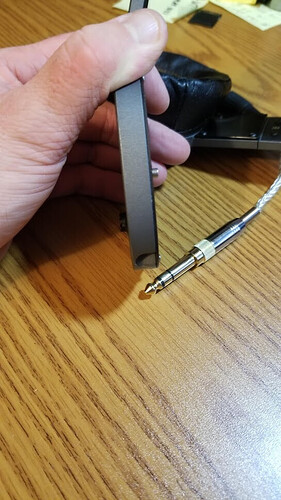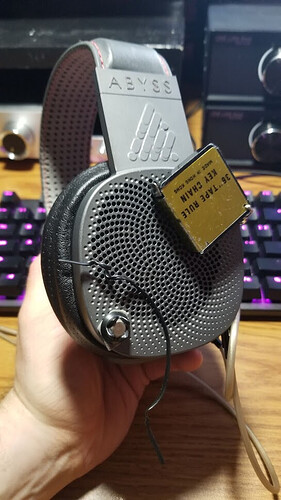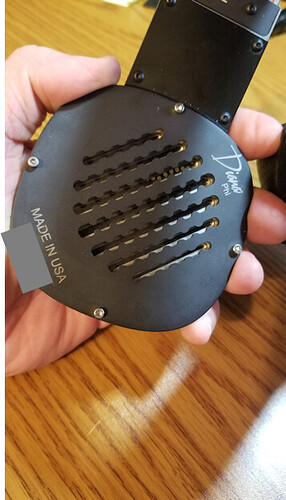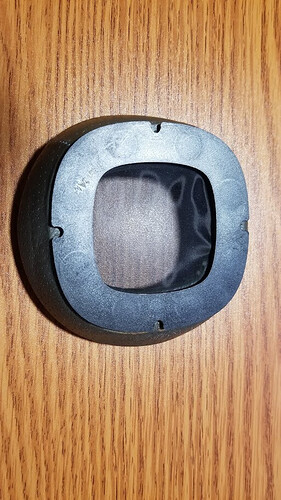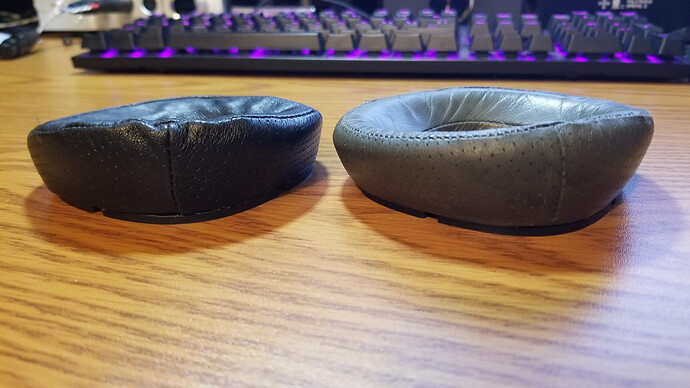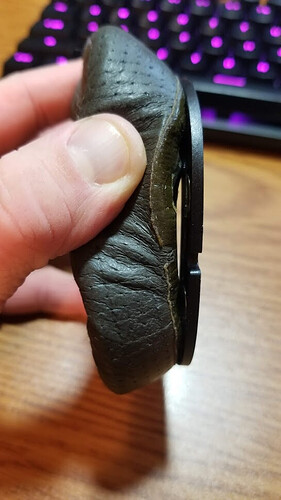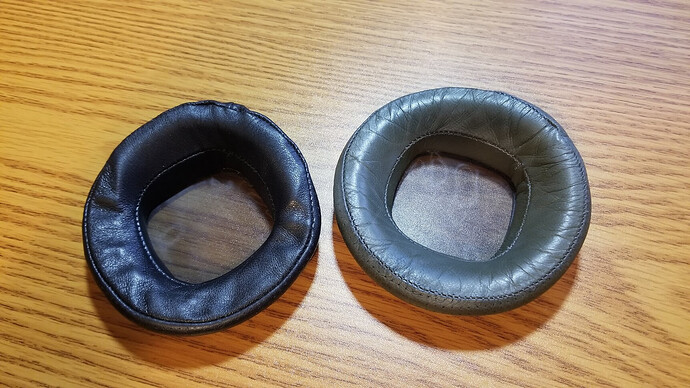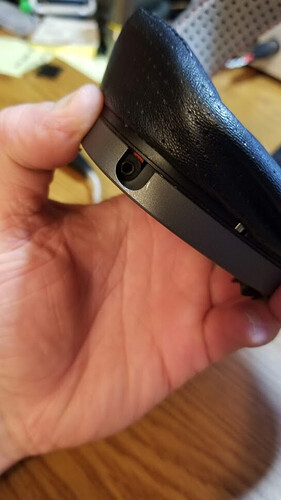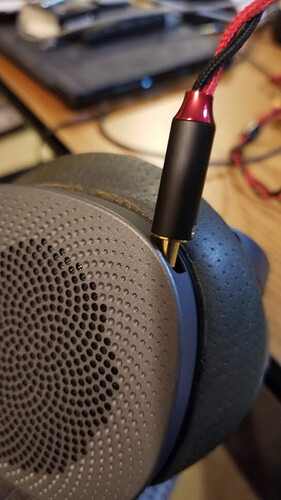INTRODUCTION
Fellow audiophiles, there’s a lot of ground to cover here. Get yourself a tasty beverage and get comfortable. We may be here awhile…
It’s been quite a stretch for yours truly. A very generous forum member loaded me up with high-end gear to play with and review. One such piece was the JPS Labs Abyss Diana Phi planar magnetic headphone. Henceforth, I shall refer to the Diana Phi as the DiPhi, both for brevity and because it’s a riff on ‘hi-fi’. These headphones are definitely getting into the high-end range of things with an MSRP of $3995 USD. I’ve seen a couple of used units from the Diana series going in the $2500-2800 range as well. Either way, what do you get for your four grand? Read on to find out.
Unrelated comment, it took me about three weeks to stop playing this song in my head every time I so much as thought about the Diana Phi, just because the first lyric sounds exactly like “please, Diana.” But I digress…
TL;DR
The Diana Phi is the most resolving headphone I’ve had the pleasure of hearing to date. To beat its shear resolution likely requires going HiFiMan Susvara, Abyss’s own 1266 series, or getting into high-end electrostats. There’s so much in the sound – room reverbs, the impacts of fingers on strings or keys, and textures that might themselves have textures, etc. – that it can re-introduce you to some of your favorite music, but also at times be overwhelming. The sound is also very impactful and fast. It puts the listener in the middle of it all. It seems more suited to more intimate styles of music, lacking that grandiosity that makes bigger, epic-sounding music sound big and epic. There are times I really enjoyed the DiPhi, and there are other times it was too much, and my monkey on my back – on my ears? – of my 1KHz sensitivity bit me again with this headphone (see “Know Your Reviewer” section). Yet, there are listeners out there though for whom this headphone will scratch that deep itch to hear as much as they possibly can and revel in its midrange presence.
KNOW YOUR REVIEWER
My preferred genres are rock/metal and classical/orchestral music. I’m getting to know jazz more and enjoying quite a bit. I also listen to some EDM and hip-hop. My hearing quirks include a high sensitivity to midrange frequencies from just under 1KHz to around 3Khz, give or take. My ears are thus quick to perceive “shoutiness” in headphones in particular. I describe “shoutiness” as an emphasis on the ‘ou’ sound of ‘shout.’ It’s a forwardness in the neighborhood of 1KHz and/or on the first one or two harmonics above it (when I make the sound ‘ooooowwwww’ into a spectrum analyzer the dominant frequency on the vowel sound is around 930Hz, which also means harmonic spikes occur again at around 1860Hz and 2790Hz). In the extreme, it can have the tonal effect of sounding like a vocalist is speaking or singing through a toilet paper tube or cupping their hands over their mouth. It can also give instruments like piano, but especially brass instruments, an added ‘honk’ to their sound. I also get distracted by sibilance, or sharp ‘s’ and ‘t’ sounds that can make ssssingers sssssound like they’re forssssssing esssss ssssssounds aggresssssssively. Sibilance does not physically hurt my ears nearly as quickly as shout, though. It’s distracting because it’s annoying and unnatural. Readers should keep these hearing quirks in mind as they read my descriptions of sound.
FEATURES, BUILD, COMFORT
As far as quality of construction goes, the DiPhi’s frame/chassis is what you would expect from a $4K headphone. The cups are rugged and made of machined aluminum. The headband is what Abyss calls “Emotion” that, in their words, “magnetically adjusts and contours your head for a comfortable fit”, which is a confusing combination of words. I think there’s a thin and highly flexible metal band encased in some quality leather for the headband. There is no swivel where the headband meets the cups. Perhaps Abyss is talking about the magnetic pad-mounting system that does change the feel and fit of the headphone. More on this in a bit. Despite the rugged build, the DiPhi is fairly light. It’s easy to hold on the head for a long time. The Fibonacci pattern of the holes on the back of the cup is also visually striking, and according to Abyss also helps with the tuning of the headphone. Also, the earcups are thin, like really thin. Look at this:
I put that ¼” plug there for scale. So yeah, skinny.
Let’s talk about that pad-mounting system. Abyss has a really good design concept here that is not only ergonomically easy and cool, it allows the listener a fair amount of tuning of the sound. Yet, there is one big weakness in the execution of this design.
Let’s start with the good part. The magnetic field the DiPhi’s drivers put out is STRONG. So strong in fact that it will pick up random things from your desktop:
Abyss leverages this magnetic field strength and makes the pads magnetically mount to the chassis. They snap on quite firmly, yet are not overly difficult to remove. There are 4 pegs on the outer edge of the DiPhi’s cup on the listener side:
There are 4 corresponding notches on the back of the earpads:
Line up the pegs with the peg holes, and the pad snaps right into place. But we’re not done! The pads and the cups are symmetric in plane parallel to the driver, being mostly square, and can be rotated in 90 degree increments for 4 different fits and yes, 4 different sound profiles. The cushion part of the pads has variable thickness (height) all the way around. Each pad has a seam along its thickest portion:
The seam is useful in orienting the pads to be symmetric with each other on each side, and also remember where the seam should be for the sound you like, eg. ‘up and forward’ or ‘down and back’. This pad mounting system is genius and IMO, sets a standard for how pads should be mounted and swappable. Even if the pads don’t rotate like they do on the DiPhi (and other Abyss models), I want pads to pop on and off magnetically like this. It’s very convenient.
OK, what’s that weakness in this pad mount design I mentioned? It’s the glue. The leather cushion portion of the pad is glued onto the frame with those notches, and it’s a fail point:
That’s a particular weakness in this design concept because the pad assembly has to be pulled away from the cup with a good amount of force. There aren’t any good finger holes in the construction to use just fingers to pry up the pad by that notched mounting frame, either. That means that pressure is put on that glue joint every time the pads are rotated or swapped, and eventually that’s going to fail. I would like to see Abyss address this because the basic concept behind the pad design is truly brilliant.
There are 2 version of pads available for the DiPhi. There are the stock pads that are the same color as the DiPhi itself, and there are the DMS pads that are black:
The DMS pads are a little thinner and a little softer, with just a bit more give. The leather is also a bit softer in feel on the DMS pads. I listened to both sets of pads in all four of the pad positions. So yes, I’ll talk about how all that sounds in the Sound section.
Fortunately, the DiPhi’s lack of cup swivel where the cup meets the headband has relatively little effect on overall comfort. The pads are soft enough that even though their asymmetric shape puts pressure on different parts of the head depending on how they’re mounted, I never had major comfort issues. With the pad seam down-and-back, the pads seal around my ear and the Abyss feels like a small headphone conforming to my head. With the pad seam up-and-back or up-and-forward the seal is broken, there’s a slight bit of pressure on the temple or right behind the ear, and it can feel like the drivers are just floating next to the ear, almost like an ear-speaker concept. It’s a different feeling that’s weird at first, but I did adjust to it rather quickly.
Finally…cables matter. And that’s true here for both sonic reason and ergonomic reasons. Unfortunately, I did not have the JPS Labs stock cable included with the set that was sent to me. I’ve been told it’s a really good cable, but I can’t confirm that. The cable jacks on the DiPhi are 2.5mm – which make sense given its thin profile – and are recessed way into the cup. However, that recess is limited in real-estate:
A very nice Plussound Poetic GPH cable came with my HiFiMan HE1000V2. That cable is terminated in 2.5mm connectors, but the barrels of the plugs prevent it from going all the way in on the DiPhi:
Hart cables fit, but I had some sonic issues with them. The imaging got a little wonky with Hart cables. I tried 2 of them because I have 2 of them with 2.5mm connectors, the problem persisted, so it’s not a bad cable. “Wonky” means there was a somewhat fuzzy center image that would drift subtly but spend most of its time slightly right of center. So…I ended up having to use the stock cables that come with the HE1000V2…yeah…those nasty-feeling ones that look like catheter tubes. They fit and worked just fine sonically, although I still wish I could have tried the stock JPS Labs cables or gotten the Plussound to fit. If you’re the type to buy custom cables, and if you’re spending $4000 on a headphone you probably are, keep this cable connection issue in mind.
(THE TEXTURE OF) SOUND
Test Equipment
Most of my DiPhi listening took place with the Holo Audio Spring 2 Level 2 DAC, Chord Hugo 2 DAC/amp (as a DAC only), and HeadAmp GS-X Mini amp. The Mini is recognized by Abyss as a good match to their Diana headphones. I also briefly tried the Violectric HPA V200 amp and Cayin HA-1AMK2 tube amp.
Sound Signature
The pad mounting and rotating system means there isn’t a set sound signature for this headphone. There are audible changes, some of large magnitude and others of lesser magnitude. A constant throughout is a very forward mid-range. The mid-forwardness changes some depending on pad position but is always front-and-center. When the pads are mounted seams down-and-back, the pads seal around the ear and the signature is overall mid-forward. With the seams up-and-back the signature is more w-shaped, but with slightly less mid-prominence than the former. To my ear, these were the two extremes. These are also the two positions I spent the most time with. The DMS pads didn’t change the overall signature but did relax the mid-forwardness a hair in both positions and generally presented a more relaxed overall sound; not a big difference, but a noticeable one.
For me personally, the mids are too forward. I have that 1KHz sensitivity and at times this headphone can simply overwhelm me at the same volume levels at which I listen to other headphones without issue. I found the DMS pads with seams up-and-back to be the least mid-forward and my most comfortable combination for listening, though not physical comfort. Here the mids are still forward but are mostly tolerable. For me, ‘tolerable’ is not a word I want to use if I were thinking about buying a $4K piece of kit. Other pad positions would get shouty and throw the timbre off for me. To my ear, the DiPhi frequently sounded like it does when someone cups their hands over their mouth and speaks or sings or sounds like the sound system of your local Cineplex where they pump up the vocal frequencies to enhance intelligibility – or so they say. This issue is a me problem, though. I’ve spoken with several other audiophiles about their experiences with DiPhi’s mids and they are completely dumfounded by my assertions here. For many, the midrange presence of this headphone will be a major selling point.
The bass and treble are excellent, though. There is excellent timbre high and low. The treble is present and sparkly without being harsh, sibilant, or piercing. Changing the pad position changes treble presence slightly, but the technical performance stays more-or-less constant. The bass is always well textured, quick, and extends very deep. The bass presence is one of the biggest pad-position changes, and its quickness and detail change some too. With a seal around the ear (seams down-and-back), the bass is lean. This pad position is also where the bass sounds quickest, most textured, and most detailed. The seams up-and-back is less physically comfortable than the sealed position (though not uncomfortable) but also makes the bass the most present. Here the DiPhi hits like a truck, rumbles with the best of them, and will satisfy all but the most ardent of bassheads will be satisfied with the bass quantity. The trade off is just a touch of speed and detail is lost in comparison with the sealed pad position and – in comparison – sounds a bit bloated. I want to emphasize the in comparison bit here, because even here the bass still sounds excellently detailed, textured, and quick, just not quite as much so as the sealed pad position.
Resolution
The DiPhi’s resolution is its most standout feature. It pulls more out of the signal than any other headphone I’ve had on my head. Subtle things like room reverb, lip and tongue smacks from a vocalist, the clicking of instrument keys, you name it, DiPhi says “here it is.” And then there are the textures. Oh! The textures! Those qualitative aspects of sound that aren’t just the tone but the instrument or voice behaving the way it does to create that tone? Yeah…it’s here. Up and down the whole audible frequency spectrum, it’s here. At times it can be amazingly organic. Does that contradict my timbre comment above? No. There were still moments when an instrument hit outside of the midrange frequencies that are problematic for me and in those moments…yes…organic, and very much so.
The resolution also holds itself together when music gets busy. The DiPhi seems to suffer very little in its ability to resolve individual instrument sounds even when there are dozens of instruments going at the same time – like in a symphony. From a detail and resolution standpoint, I never heard it lose its cool. Even though they are too-forward and unnatural in timbre for me a fair amount of the time, complex vocal harmonies are also very well resolved. There is excellent balance between resolving individual voices and also blending the voices to create a soundscape. Think of the harmonies in Seven Bridges Road by Eagles here.
The resolution is also very forward. The DiPhi is highly resolving and comes across as being proud of it and wanting to announce it from the rooftops. Listener preference matters here. Some listeners will be enthralled in the level of aggressive detail being fired down their ear canals. Others will find it too much. I am somewhere in the middle. There were times when I loved the detail. There were times when it got fatiguing.
Spatial Presentation
Imaging and separation are on point with a good sense of depth. There is a fair amount of holographicity (I’m making that a word!) to the spatial presentation. It’s not big, though. The stage is a bit more on the intimate side. While instruments and voices are placed well and differentiated from each other within the soundfield, the overall sense of space is a little on the small side, even when a track demands to be big. Bohemian Rhapsody, 1812 Overture, Toccata & Fugue in D Minor on a pipe organ, Mountains by Hans Zimmer, etc. all benefit from sounding HUGE. The DiPhi doesn’t do huge. To be honest, though, the only time I ever really noticed the soundstage and imaging, for good or ill, was when I expected/wanted a track to sound bigger and grander. When the limited size isn’t an issue, the spatial presentation does little to call attention to itself. IMO, that’s a compliment. The imaging and separation are good enough to be non-distracting. They’re also not distracting in the opposite direction…until that last bit of size is needed.
COMPARISONS WITH OTHER HEADPHONES
I had the distinct privilege of having the DiPhi, the Audeze LCD-24 ($3495), and the HiFiMan HE1000V2 ($2995 – HekV2) all in-house at the same time. What a treat! All three of these headphones are fantastic in their own ways. They all have their own place in the high-end headphone market too. I also own a Fostex TH900 with Lawton purpleheart cups and driver-side tuneup (~$2000 when all is said and done) that I will comment on here briefly as well.
I compared the HekV2 and the LCD-24 a bit more to each other in my LCD-24 review (a HE1000V2 review is pending, I promise). This comparison will be tailored more to how those stack up with the DiPhi.
The DiPhi is the most resolving of the three. The LCD-24 and HekV2 are no slouches in the resolution department either, but the DiPhi is simply on another level. After that the 24 resolves individual instrument sounds better than HekV2 but HekV2 resolves really busy, complex music better. The DiPhi doesn’t care if music is simple or extremely busy, it’s resolution is absurdly good in either case. This resolution can also make the DiPhi hard to relax with, whereas the more subtle resolving approaches of the 24 and HekV2 make them more kick-back-and-relax types of headphones.
All three headphones image and separate very well. To my ear, the HekV2 has the most natural imaging, which is connected to it having the most natural soundstage of the three. The HekV2 has that HiFiMan egg-shaped line enormity to its soundstaging and then places sounds in that soundfield very well horizontally, vertically, and with depth. The 24 and DiPhi are also very good here but the 24’s 1KHz energy can tend to collapse the soundstage and imaging. The DiPhi’s mid-forwardness doesn’t do any similar collapsing but it also just doesn’t sound very big as a general rule.
The treble timbre on the LCD-24 is stellar and leads the pack in that category. The DiPhi’s bass timbre is equally stellar and it easily leads in that category. For my ears, the mid-range timbre on the HekV2 is the best of the three, and it’s not close. Some of that is the HekV2 having a dip around 1KHz in its frequency response which matches my ears’ sensitivity almost perfectly. Some of that is that it is more subtly detailed and doesn’t announce how detailed it is in that range; sounding more natural to me.
In terms of bass presence, the DiPhi leads when the pad seams are up-and-back and might actually come in third when the pads are down-and-back to create a complete seal around the ear. The HekV2 is close behind the DiPhi in the up-and-back position though and both are noticeably ahead of the 24. The DiPhi easily has the most bass texture and slam of the three (again, with seams up-and-back). The 24’s bass initially presents as being slightly more textured than HekV2’s but I think the HekV2’s increased presence in the bass makes that texture a little less readily noticeable, but upon further listening it’s definitely there. I’ll bring the TH9000 Lawton back in here, because perhaps the TH900 is more accessible comparison point for many. I think the TH900 and the DiPhi can have similar bass presence and punch when the DiPhi pads are in the up-and-back position. The DiPhi has more detail and texture, but the quantity of bass is more similar to a TH900. It may not come across that way initially because the TH900 has a pronounced V signature where the DiPhi’s mid-forwardness might decrease the perception of bass presence in comparison.
When I first put on the DiPhi, 24, or HevV2, I notice certain things about them right away. For the DiPhi the resolution and detail are always the most attention grabbing, followed closely by how forward the mids are. For the 24 the first things I notice are how natural and lush it can sound with exquisite treble timbre…until its shoutiness comes in. With the HekV2 it’s the huge and believable spatial presentation along with being warm and relaxed. The weaknesses of the three are the relentless to the point of fatiguing detail and resolution and mid-forwardness that messes up midrange timbre for the DiPhi, the shoutiness and limited ability to resolve complex music of the 24, and the at-times inappropriate soundstage size along with rare but nonzero treble sharpness/sibilance with the HekV2. In fairness, many listeners will find the HekV2’s mid-range presence lacking as well.
If I were to spend $3K+ of my own money on one of these three headphones, it would be the HekV2. It’s frequency response and more subtle approach to detail retrieval – it’s still very resolving just not DiPhi resolving and DiPhi proud of it – are better matches to my hearing and music tastes than the other two. If I were to buy 2 of these 3 – dreams! – the second would be the DiPhi, although in fairness I’d probably look elsewhere first. The DiPhi has genuine strengths that make it even better suited for some music that I listen to more than HekV2. But, I also don’t listen to that music nearly as much.
FINAL THOUGHTS
The DiPhi taught me some things, both about what is possible in sound reproduction and about my own tastes. It’s hard to believe how much detail can exist in a recording – good or bad recording really – until you hear one of these headphones. It has also painted the clearest sonic pictures of the concept of ‘texture’ for me to date. I now am able to hear textures more effectively in less resolving equipment because I know what to listen for after hearing this ‘pure form’ – for lack of better term. However, I also learned that this hyper-detailed presentation sounds unnatural to me on most material. I prefer more subtle detail. To my ear, real-world sounds aren’t detail-forward. The details are naturally occurring and more subtle than what the DiPhi presents. What the DiPhi does in detail retrieval is absolutely impressive and can at times be fun in its own way, but it also can be too over-the-top and reduce the realism for me. However, many listeners will think that I’m nuts here and love the DiPhi for how much it can extract from the signal.
The Abyss Diana Phi is truly a technical marvel of a headphone. They packed prodigious detail retrieval, outstanding bass quantity and quality, and the coolest and probably most ergonomically genius pad mounting system I’ve ever seen into a very robust but small package. It will present you almost all there is in your music – good or bad. Personally, I wish for a little bit more soundstage size from this headphone, and at least one pad setting that would chill the midrange even more than the current options. Unfortunately, I just could not get the midrange timbre to sound right with this headphone because it is so mid-forward; everything had a hollow sound to it. Still, many listeners will not hear that issue or just plain like that approach. And to those listeners, the DiPhi should be on your audition list, no question.
Thanks for reading. Enjoy the music! ![]()
